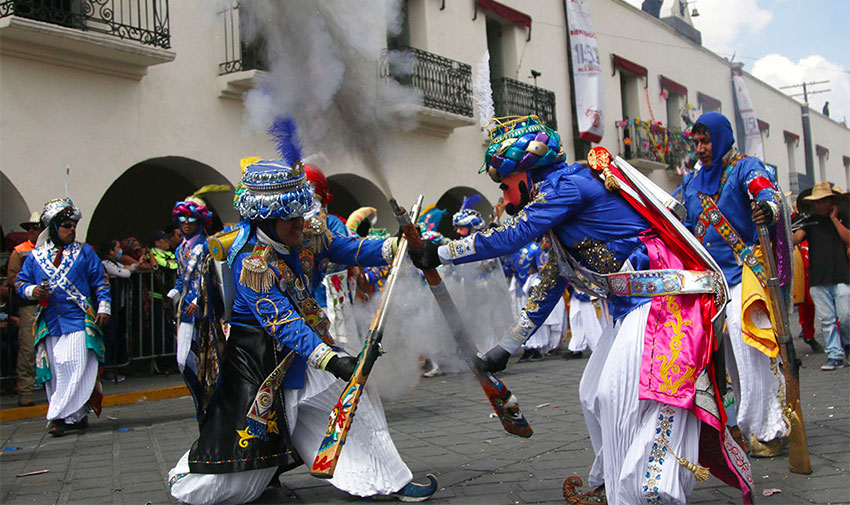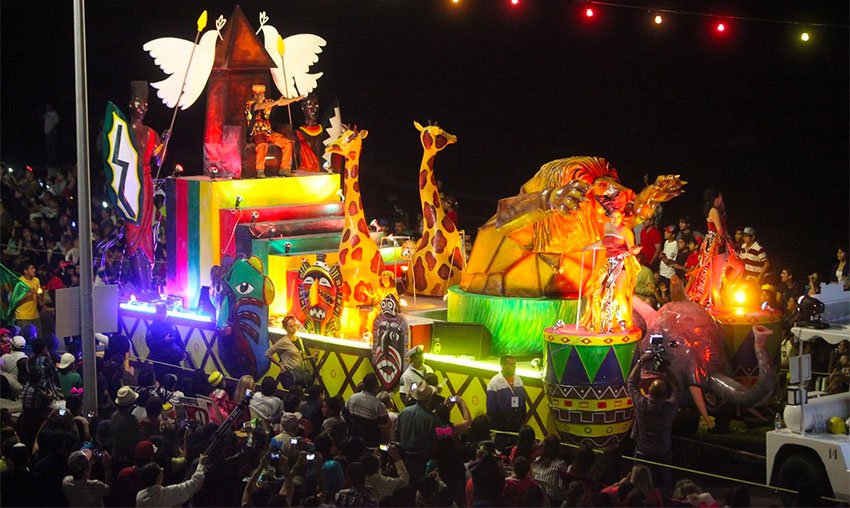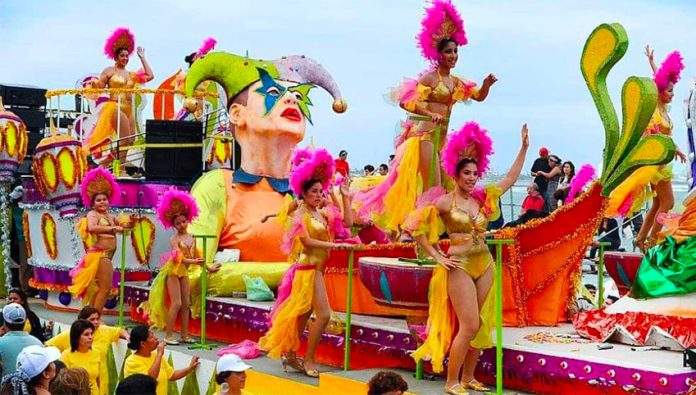Despite its international reputation for loving a good party, Mexico isn’t known for its Carnival although it is celebrated in one form or another in about 225 communities. But none is anywhere as big or famous as those of Rio de Janeiro or New Orleans.
The reason behind the festival’s lack of visibility is historical. Like other celebrations on the Catholic calendar, Carnival was brought to Mexico by the Spanish. It gained acceptance by many indigenous communities because it fell around the same time as the “lost days” of the Mesoamerican calendar. This and Carnival share traditions of donning masks and letting certain social rules slide.
In fact it was those two things that caused colonial authorities to suppress Carnival in New Spain by the 17th century. Celebrations by the indigenous and lower castes had become too irreverent and mocking of authority. By the early 18th century, major Carnival celebrations had been successfully banned in the cities.
A number of small towns in rural areas managed to evade enforcement, and their Carnivals survived. However, the ban had the effect of isolating such celebrations, one reason why their fiestas have very localized characteristics.
Major public Carnival celebrations began to make a comeback in the very late 19th and early 20th centuries, especially in the coastal cities of Veracruz, the Yucatán peninsula and Baja.

The two largest and most renowned are those of Mazatlán and Veracruz. Mazatlán’s is slightly older, dating back to 1898, but Veracruz’s is much larger, lasting nine days with six major parades. It has been particularly successful because of the area’s musical traditions, a blend of European, indigenous and African.
Other cities with modern Carnivals include Ensenada, Mérida and Cozumel but all of those closely resemble their counterparts in other countries. They have become locally important as a source of tourism income. The 2019 Veracruz Carnival attracted 1.5 million visitors to the city; in the same year, Mazatlán’s earned the city 300 million pesos (US $15.86 million).
Far more “Mexican” are those Carnival celebrations found in small towns off the beaten tourist paths. They can be found in many parts of central and southern Mexico in states such as Jalisco, Oaxaca, Chiapas and Tabasco, but the greatest concentration of such celebrations is found in the states of Morelos, Puebla and Tlaxcala, even reaching into the eastern sections of Mexico City.
What makes these celebrations important is that they are blends of European Carnival traditions with local indigenous cultures and history. While such modern features as parades with floats are a part, the focus is almost always on traditional dance, costume and music.
The most common element in the Carnivals just east and south of Mexico City are wood, wax or paper maché masks that represent European men with beards. These masks represent how the indigenous of the colonial period saw the Spanish and bear witness to these Carnivals’ survival of colonial-era repression.
In the state of Morelos, the stars of the state’s many small Carnivals are the Chinelos, a style of dance and costume which emerged as a way for the local indigenous to mock the ostentatiousness of their Spanish overlords, safely behind a wooden mask. In Tlaxcala and Puebla, the dance is the Huehues, which originated with the indigenous imitating the dress and manners of the Spanish at parties they could never attend.

The largest and most famous of these traditional Carnivals is that of Huejotzingo, Puebla. It is also quite unique. The town’s center is dominated by its 16th-century monastery church, seriously damaged in the 2017 earthquake. In its shadow, over 2,000 of the town’s people take part in a mock battle (very) loosely based on the Battle of Puebla, when Mexican forces repelled the invading French on May 5, 1862. Although Cinco de Mayo is not a major holiday nationally, it is a big deal in Puebla.
This reenactment is not a dance per se, but rather a massive secular ritual. The town’s four traditional barrios are assigned different roles. Two represent the invading French, called Zuavos, and their hired mercenaries the Turcos. The other two represent Mexican forces called the Indios Serranos and the Zacapoaxtlas.
During the days of Carnival, people run around with fake muskets which explode real gunpowder (no bullets). Even small children get into the act, with smaller versions of the dress and muskets, minus the gunpowder. Unfortunately, the mix of gunpowder and alcohol usually means one or more serious injuries, usually to the participants’ hands.
Although Mexico City is the country’s largest metropolis, there is not (as of yet) a major Carnival celebration. Instead there are various small carnivals of the rural-type located in the far eastern and southeastern boroughs of Iztacalco and Iztapalapa. This is because these areas were all very rural until the mid-20th century. In the case of the Carnival of Peñon de los Banos, next to the city’s airport, its existence is due to the migration of people from Puebla settling in this neighborhood.
Authorities in the various states have done some work in promoting the smaller Carnivals as tourist attractions. One notable exception to this is Mexico City. This is likely because these Carnivals take place in poor neighborhoods with crime issues.
It is important to note that these small Carnivals are community and family focused, especially the daytime. If public drunkenness and related problems occur, they are after dark.
This year, the most active days for Carnival in Mexico are between February 20 and 25 (ending at midnight, when Lent officially begins), but starting dates of local events can vary widely.
Some other traditional Carnivals by state:
Chiapas: San Juan Chamula, Huistán, Carnaval Zoque Coiteco Ocozocoautla
México state: Amecameca
Hidalgo: Calnali, Pisaflores, Jaltocan, Tenango de Doria
Jalisco: Jalos, Autlan, Jalostotitlán, Ameca, Sayula, Amatitlán
Mexico City: Santa Cruz Meyehualco, San Andrés Tetepilco, San Andrés Tomatlán, Santa María Tomatlán, San Sebastián Tecoloxtitlán. Santiago Acahualtepec, Los Reyes Culhuacán, San Lorenzo Tezonco (all in the borough of Iztapalapa)
Morelos: Tepoztlán, Tlayacapan, Yautepec, Jiutepec, Tlanepantla,
Oaxaca: Tuxtepec, Silacayoapan, San Martín Tilcajete, Pinotepa San Jerónimo Xayacatlan (called Joc-Lo)
Tabasco: Tenosique, Jonuta
Tlaxcala: Tlaxcala city
Veracruz: Ojite de Matamoros, Solteros de Juan Rosas, Arroyo Florido
Zacatecas: Carnaval de Rio Grande
Mexico News Daily
